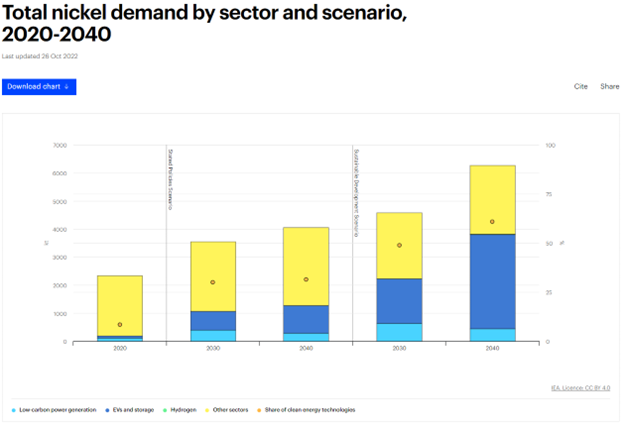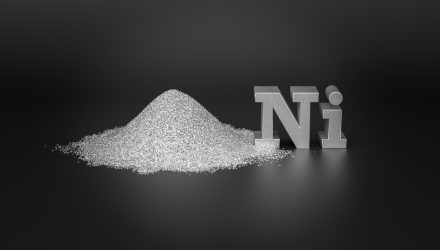An influx of nickel from Indonesia has led to a global nickel oversupply that is driving prices down. It’s an imbalance that creates an opportunity for investors to gain exposure to one of the key metals for electrification.
The supply and demand pendulum is likely to swing in the opposite direction in the coming years as EV production kicks into high gear. Right now, physical nickel markets are flooded with an excess of nickel as Indonesia adds to supply, driving prices down.
The International Nickel Study Group increased forecasts this year to 239,000 tons of overage. It’s a marked increase compared to the 105,000 oversupply last year, representing a 10% gain in production year-over-year.
“The INSG continues to expect mild growth in the stainless steel sector and the increasing use of nickel in batteries for electric vehicles,” INSG noted.
The expectations of a 6% increase in demand this year will fall short of the excess supply. This imbalance creates a window of opportunity for investors looking to capture the expected surge in nickel demand in coming years and decades.
International Energy Agency’s latest nickel forecast calls for a base case demand growth by EVs of nine times by 2040. If countries follow aggressive sustainability plans, this EV-driven demand for nickel could jump to 41 times 2020 levels.

Image source: IEA
Seize the Long-Term Opportunity in Nickel Prices With KMET
Given the long-term demand outlook for nickel, there is a strong buying opportunity now for investors. The KraneShares Electrification Metals ETF (KMET) offers targeted exposure to the metals necessary for electrification, such as nickel. The fund offers exposure to growing metal demand from the clean energy transition via the futures market.
The fund seeks to track the Bloomberg Electrification Metals Index. KMET carries futures contracts on copper, nickel, zinc, aluminum, cobalt, and lithium. These metals are all core components for batteries, electric vehicles, and the renewable energy infrastructure needed to meet 2050 net-zero goals.
KMET currently has a 24.8% allocation to nickel futures and a 24.73% allocation to copper futures, with an expense ratio of 0.79%.
For more news, information, and analysis, visit the Climate Insights Channel.

